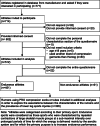Lower extremity compression garments use by athletes: why, how often, and perceived benefit
- PMID: 33761989
- PMCID: PMC7992841
- DOI: 10.1186/s13102-020-00230-8
Lower extremity compression garments use by athletes: why, how often, and perceived benefit
Abstract
Background: Studies on the benefits of lower extremity compression garments (CGs) have focused on their effects on post-exercise recovery and performance improvement. Less is known about why athletes actually use CGs, the frequency with which they use them, and perceived benefits from using CGs. The purpose of this study was to investigate which athletes use CGs, why athletes use CGs, when CGs are worn by athletes, and, in case of an injury or injury prevention, for which injuries CGs are used.
Methods: This cross-sectional study involved 512 athletes who used lower extremity CGs. Athletes completed a questionnaire on the type of CGs they used, and when and why they used them. They also reported their sports participation, past and current sports injuries, and the perceived benefits of using CGs.
Results: 88.1% (n=451) of the athletes were endurance athletes and 11.9% (n=61) were non-endurance athletes. Endurance and non-endurance athletes reported running (84.7%, n=382) and obstacle course racing (24.6%, n=15) the most frequently as primary sports, respectively. The most-used CG was the compression sock (59.2%, n=303). In total, 47.5% (n=246) of the athletes used a CG primarily to prevent re-injury and 14.5% (n=74) to reduce symptoms of a current sports injury. Other primary reported aims were primary prevention (13.6%), post-exercise recovery (14.3%), sports performance improvement (8.8%), and to look good (0.2%). The point prevalence of past and current sports injuries among all athletes was 84.2 and 20.2%, respectively. The most common current sports injuries were shin and calf injuries. Many athletes "always" or "often" used their CGs during training (56.8%, n=279) and competitions (72.9%, n=264). Furthermore, almost 90% of the athletes that aimed to prevent re-injury by using CGs reported that CGs contributed to secondary injury prevention.
Conclusion: 88% of the CG-users were endurance athletes, of which 85% were runners. All athletes mainly used CGs to prevent injury recurrence, but also to reduce symptoms of a current sports injury. A majority of the athletes reported positive perceived effects from the CGs. CGs were used more during than after sports participation.
Keywords: Athletes* [MeSH]; Epidemiology [MeSH]; Sports injuries [MeSH]; Stockings, compression [MeSH].
Conflict of interest statement
For the purpose of this study the authors worked with one particular manufacturer of compression garments (CGs). The database of this manufacturer was used to recruit athletes for our study.
The authors declare that they have no other competing interests.
Figures



References
-
- Kraemer WJ, Bush JA, Bauer J A., Triplett-McBride NT, Paxton NJ, Clemson A, et al. Influence of Compression Garments on Vertical Jump Performance in NCAA Division I Volleyball Players. J Strength Cond Res [Internet]. 1996;10(3):180–3.
-
- Kraemer WJ, Bush JA, Wickham RB, Denegar CR, Gomez AL, Gotshalk LA, et al. Continuous Compression as an Effective Therapeutic Intervention in Treating Eccentric-Exercise-Induced Muscle Soreness. J Sport Rehabil [Internet]. 2001;10(1):11–23. Available from: http://journals.humankinetics.com/doi/10.1123/jsr.10.1.11.
-
- Schuren J, Mohr K. Pascal’s law and the dynamics of compression therapy: A study on healthy volunteers. Int Angiol. 2010;29(5):431–5. - PubMed
LinkOut - more resources
Full Text Sources
Other Literature Sources
Medical
Miscellaneous

